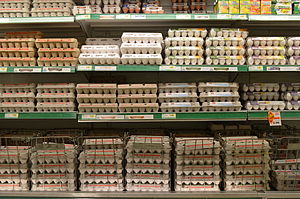Somehow over the years, macaroni and cheese became a dish only suitable for children. Worse yet, the public cognizance of it was pretty much confined to boxed pasta with powdered, colored cheese product. Bleah. No wonder its popularity decreased below the bottom line, right down there with green Jell-O.
None-the-less, those of us old-timers who remember mac and cheese with fondness are tickled to find that it is suddenly reinvented as a gourmet dish, served in restaurants at every level of culinary class from buffets to experimental fusion glamour. One restaurant menu even calls their dish “adult mac and cheese.”
The fact is, just about everyone loves mac and cheese, although many kept the liking as a guilty little secret. Well, the secret is out and mac and cheese is in -- which is a boon to potluckers.
So the other night we attended a surprise birthday party arranged by the wife of the “birthday boy” to take place at a local motel meeting room and “potluck” in participation. Since the family has a couple of about-to-be-teen children, I figured that there would be a bunch of kids. So I finally decided to take a large casserole dish of mac and cheese and some chocolate chip cookies. No matter what other “adult” fare showed up, I figured the kids would be happy with that.
Sure enough, when I waited a bit for the “rush” to the food table to die down and walked through the room to get into the line, I passed tables of kids with heaps of mac and cheese on their plates. Three boys under 12 had nothing but mac and cheese, and others had a healthy helping. Most adults had a serving as well. I had to dig around the edges of the dish by the time I got there. I will say that I make some of the very best mac and cheese I have tried, including offerings at restaurants (I’m always curious to compare).
My “recipe” conjures up enough for a small crowd (10” square casserole dish or approx. 13”x 9” baking pan, about 4 quarts. You can adjust amounts up or down or any size or to any taste.)
INGREDIENTS: (amounts are approximate according to taste)
* 1 pound macaroni (elbow, shell – your choice but something that holds sauce well)
*1 pound cheddar cheese (medium or sharp) or combination of cheeses (good way to use up bits and pieces).
*1 quart milk
*6-8 tablespoons butter, softened
*Flour: about 1/3 cup, plus 3 tablespoons
*½ to one each red and green bell peppers and yellow onion (amount depends on size and taste)
*about 2 teaspoons mustard flour (this mixes with tossing flour, but you can use regular mustard in the sauce itself if you don’t have the powdered version, about 1-2 tablespoons)
*red pepper flakes or seasoning
*granulated garlic or fried dry garlic or garlic powder or 2 finely-chopped garlic cloves – if you wish. Dry stuff goes in tossing flour, chopped goes in sauce.
*dried breadcrumbs, enough to cover surface of dish (seasoned crumbs are OK. I used some garlic/herb crumbs that I made from a leftover hunk of a loaf.)
Method:
Heat oven to 350
Oil your casserole dish or baking pan liberally, included sides.
Put on a large pan or kettle of water. You add a bit of salt if you wish. When it comes to boiling, add pasta. Add some oil to keep foaming down if you wish. Cook to semi-tender, drain and set aside.
In a large bowl, mix approx. 1/3 C flour with mustard flour, dry garlic product, pepper flakes. Set aside. (If using fresh garlic, add to processed veggies per below.)
Shred cheeses (food processor is great for this) and put in the bowl with the dry ingredients and toss to coat cheese.
.
Finely chop vegetables (processor is great – but don’t over-process: you want colorful bits to show in the sauce. Process fresh garlic with the veggies if you are using it.) Set aside.
In a large heavy pot, melt about 3 T butter until bubbly, then carefully and quickly stir in flour one spoonful at a time. Stir until thick and golden. Add milk SLOWLY (even better if you heat it first) and stir constantly to avoid lumping. When sauce starts to thicken a bit, add cheese one handful at a time, stirring rapidly until it is incorporated. Add chopped veggies and stir. Add mustard here if using prepared. When it has all incorporated, taste and add salt and/or pepper if you wish. Add “optional” items (see below). Add drained pasta and stir to heat.
Pour it all into your baking pan or casserole. Sprinkle bread crumbs across the top and dab with butter.
Bake at 350 for about half an hour, or until crumbs are starting to brown to your liking. You can hold this in a warming oven set to medium for several hours. Cover with lid or foil and go take a nap.
Variations:
Add canned chile con carne with or without beans.
Add some fresh or frozen or canned corn kernels.
Add robust red wine or mellow beer (gradually and taste as you go, some can be overwhelming).
Add balsamic vinegar (but not with wine or beer), about 1/3 cup, but taste as you add little at a time since strengths and flavors differ widely.
Be creative with herbs, but don’t overdo. A little parsley or dried celery leaf or dill can add a bite of flavor.
Sprinkle chopped green onion over the top.
Add some chopped kalamata olives to the sauce, or sprinkle over the top.
Sometimes simpler is better. The kids got the unenhanced version above, and loved the simplicity and familiarity of it. You can challenge adults a bit more, but keep it “comfort food.”




















